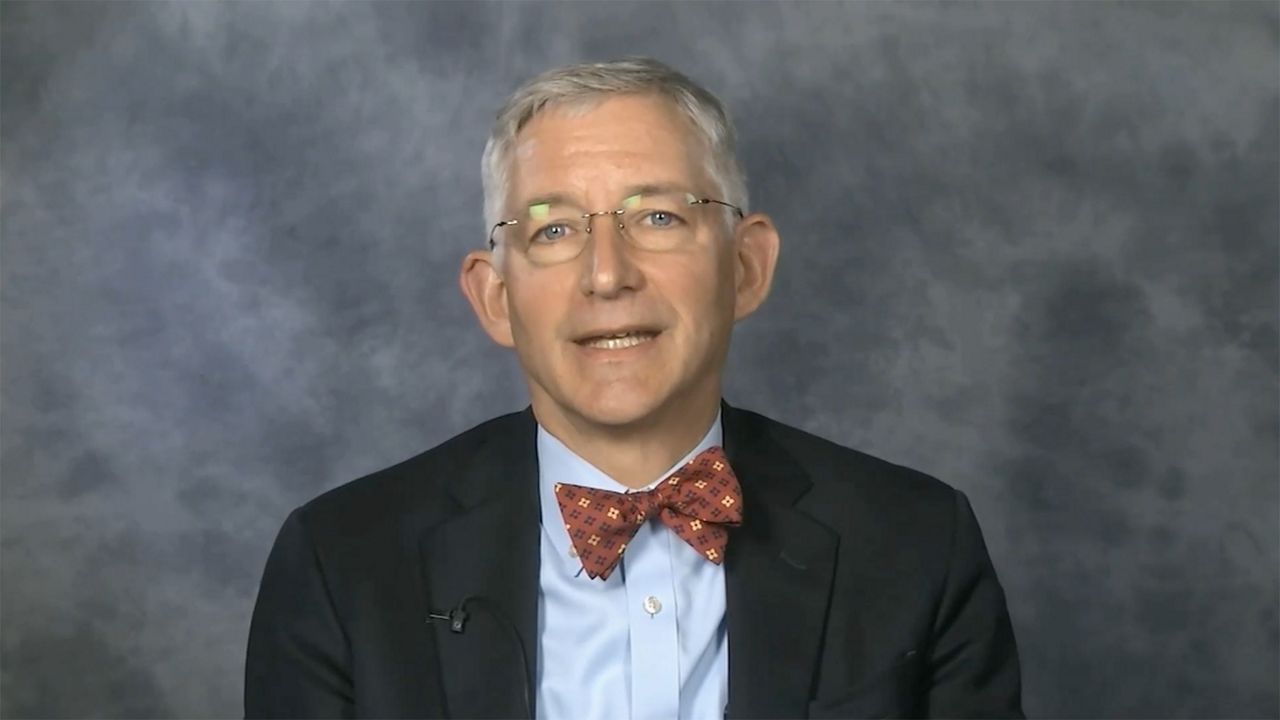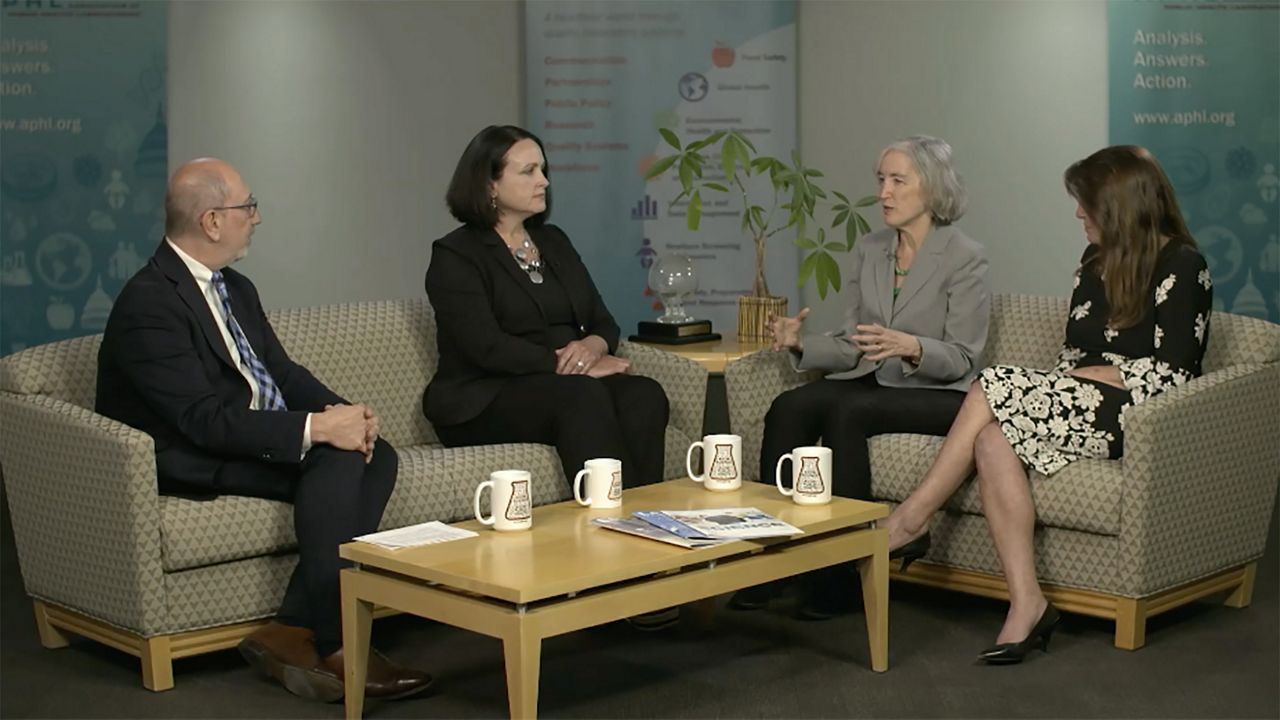CLEVELAND — Public health laboratory experts, gathering in Cleveland for a major conference, discussed how public health could take on an expanded role in the future to address long-term COVID-19 response and preparations for future outbreaks.
What You Need To Know
- Public health labs want to continue disease response programs like sequencing and wastewater surveillance
- A former top CDC official recalls times in 2020 when public health messaging was muddled by politics
- Experts discussed the future of public health laboratory work during the annual APHL conference in Cleveland
Investments in public health infrastructure, like wastewater virus monitoring, will equip agencies to respond better to disease outbreaks that could occur in the years ahead, Ohio Health Director Dr. Bruce Vanderhoff said during remarks kicking off the Association of Public Health Laboratories (APHL) annual conference.
“We're proud that Ohio was one of the first states to invest heavily in this infrastructure, and I believe it will pay dividends for public health long after COVID-19 poses much less of a threat to our health care infrastructure and the health of the population that we all proudly serve,” he said.
A couple years ago, public health laboratories were focused on trying to understand and track the virus, Vanderhoff said. The focus has shifted more recently to putting an end to the pandemic, he explained.

Beyond the pressing demands for lab work, the pandemic put public health up against other types of challenges no one was fully trained to tackle.
Dr. Anne Schuchat, who was the second highest official at the Centers for Disease Control and Prevention prior to her retirement in June, recalled times in 2020 early in the course of the COVID-19 outbreak when the public health messaging was muddled by politics.
A member of the federal COVID task force, Schuchat appeared in virus press conferences, including one on Feb. 26, 2020 where the virus's threat was downplayed as former President Donald Trump said the risk from COVID-19 to the American people was very low.
Schuchat said her mind raced in those moments, but she said it was just one of many overwhelming challenges for public health that would come as the crisis worsened.
“The hard days, I would get strength from other people, and the good days I would try to give strength to other people,” she said.
Despite her long career in respiratory infectious diseases, which involved many pandemic preparedness drills and experience working on H1N1, Zika and Ebola, COVID-19 brought new challenges because the scope of the virus’s spread was unprecedented for modern times in the U.S.
Throughout the conference last week, which involved 1,300 people who registered to attend in person in Cleveland or virtually, public health laboratory experts talked about how the volume of diagnostics, lab work and sequencing required restructuring their agencies and massively scaling up numerous endeavors.
Some days during the pandemic, it felt like Christmas morning for Megan Crumpler, Laboratory Director Orange County Public Health Laboratory in California, when she would walk by the lab's receiving space to find more deliveries of COVID-19 response supplies.
“We had equipment coming in, and we really had to figure out a way to manage all of these supplies,” she said. “We may have had an abundance of some things, but dealing with the shortages was also challenging.”
The lab’s hallways are still filled with boxes, she said, but they are getting a trailer to store supplies because she said they need to be prepared to scale back up certain efforts in the future.
“We've been flooded with funding in the last couple years, and we just hope that money keeps flowing so that we can maintain all this equipment we have, find new uses for it, or just keep it around so if we do go into surge mode then it's available for use, and we're not scrambling to buy things,” she said.
New study research on the challenges public health laboratories have faced during COVID-19 response showed that experts have not always received the support they need from government officials, said Christina Potter, senior analyst at the John Hopkins Center for Health Security.
“Sometimes we heard these incredible stories of governors personally calling suppliers or private companies… or essentially saying ‘Hey, spend what you need to spend, we'll figure it all out later,’” she said. “Other times we heard not as positive stories about leaders making unilateral decisions on testing strategy or partnerships, or even engaging in multimillion dollar contracts without any input from the public health lab.”
With cases lower, experts at the conference said it's the time to consider the future of public health work and to figure out what types of investments could be helpful going forward.
Potter said if public health labs don’t receive new long-term funding beyond onetime emergency expenditures they received for COVID-19, they won’t be able to maintain the infrastructure that would prepare us for future health crises.
Laboratory experts said genomic sequencing of COVID-19 is among some the most important work that they want to continue doing.
“Sequencing has really become our latest core function,” said Scott Becker, chief executive officer of APHL.
Sharon Messenger, research scientist supervisor at the California Department of Public Health, said the state led the way with sequencing, part of the reason why the first omicron case was detected in California.
“It's notable that early in the pandemic, a survey of our local public health labs revealed that only two laboratories had existing capacity to perform viral whole genome sequencing. We now have 19 and counting,” she said.
Health officials in California aggressively sequenced positive samples related to initial omicron outbreaks, including the second case in the state, which they found out related to a cluster of 39 cases involving a wedding, Messenger said.
Now, as more COVID-19 testing is being done at home, Messenger said California is involved with early efforts to conduct genomic sequencing from rapid antigen test kits, a novel approach to tracking variants that could be more threatening.
While some of the experts discussed positive improvements in modernizing data systems for tracking disease, systems still are not always up to the current highest standards.
“I think public health in general, and probably laboratories in public health more than ever, have been so humble about what's needed, and have been so starved of resources for decades, that the idea that you could really get more was so unbelievable. But the reality is that the private sector was shocked to see the state of our data systems,” Schuchat said.
A key part of preparing for a future outbreak will be improving disease testing capabilities, said Brandi Limbago, associate director for laboratory science at the CDC’s National Center for Immunization and Respiratory Diseases. Limbago said the pandemic brought attention to the need for standardization for diagnostic practices.
“A lot of our testing is on discrete pieces of equipment and not everything runs in the same way. In the case of the pandemic, labs were running out of this and getting a new one of that, and that was just constantly happening,” she said. “It felt like running around putting out fires constantly.”
Denise Toney, director of Virginia’s Division of Consolidated Laboratory Services, said now is the time for public health to strategize how it can address lessons from the pandemic to improve our ability to respond against future diseases.
“I don't think we could have ever been prepared for everything that we experienced with COVID-19, but I do feel we're moving in the right direction and we will be very prepared for whatever lies next,” she said.



